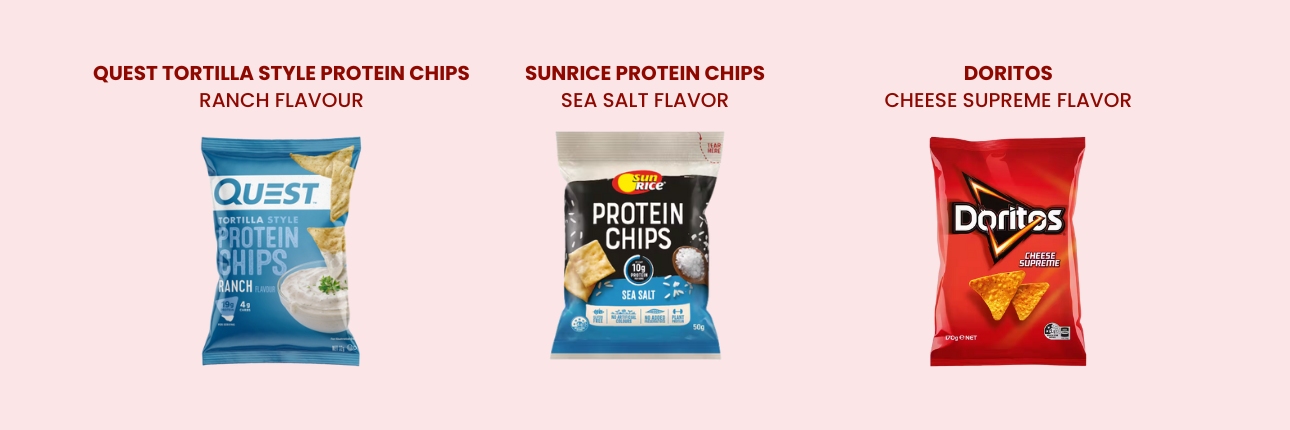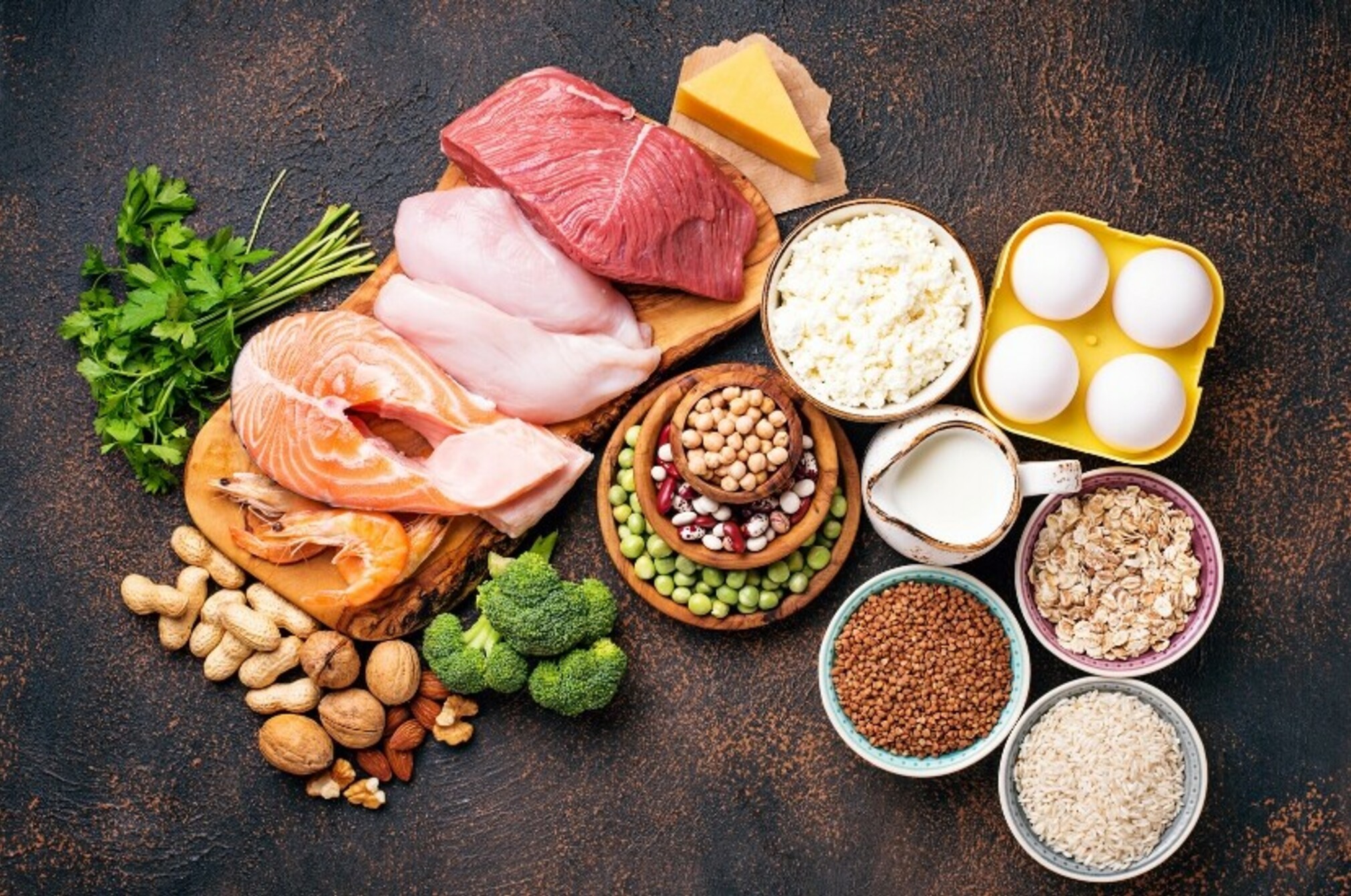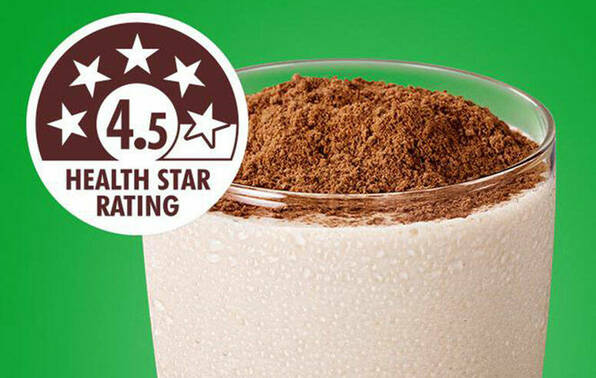How healthy are the products making protein claims?

From chips and ice-cream to breakfast cereal and yoghurt, there’s a range of products making protein claims. We checked out how healthy they are and discovered some are more hype than health.

If your Instagram feeds are full of influencer advice and recipes to up your protein intake, you might have noticed the increasing number of products making protein claims. While protein claims used to be confined to sports foods and protein bars, food marketers in other categories are now jumping on the protein bandwagon.
It got me thinking.
Protein is essential for cell growth and function, it’s a good source of energy and it’s key to building muscle and maintaining a strong immune system. But how healthy are the products spruiking protein claims, and do we need protein-powered products in our diets?
To find out, I checked out six common food categories and spoke to Dr Leanne Young, public health dietitian and member of the Food Policy Expert Group of Health Coalition Aotearoa.
Products we researched
Chips

Our verdict: These chips do pack a protein punch, but they’re also high in sodium. Eating too much sodium (the baddie in salt) can increase your blood pressure, the number one cause of stroke in New Zealand. Plus, the eye-watering price tag means you’d be better off buying regular Dorito chips and including a side of salsa or dip with beans or lentils to get your protein hit.
Breakfast cereals

Our verdict: There’s not much difference between Kellogg’s Nutri-Grain High Protein Crunch and the much cheaper, regular Nutri-Grain. Both contain more than 20% protein but also give a sizeable sugar hit (more than 20%) so shouldn’t be your regular breakfast cereal go-to.
Nestlé Milo’s offerings are also high in sugar, and although there’s more protein in the High in Protein option, there is less fibre than the regular cereal.
Ice cream

Our verdict: For a similar price to gourmet ice cream brand Ben & Jerry’s, Gym Bod’s Chocolate Pudding contains nearly double the protein and a lot less energy and sugar. But we think the protein claim on the packaging (21+g per tub) is misleading. There are three servings in the tub, which works out to 7.3g per serving.
We were also put off by the lengthy ingredients list which includes rice flour, corn flour, potato flour and a number of low kilojoule sweeteners.
Muesli bars

Our verdict: The muesli bar aisle is littered with bars making protein claims. Tasti’s Protein Fix gets the biggest thumbs down from us. Chocolate is its main ingredient, it’s nearly one-third sugar and is high in saturated fat.
Another downside of getting your protein hit from a muesli bar is the negative impact on your teeth – the bars’ stickiness means they stick to your teeth and can lead to tooth decay.
Peanut butter

Our verdict: Fix & Fogg’s Protein Peanut Butter only has 3.2% more protein than its regular smooth peanut butter. That’s less than 1g in the 30g serving recommended by the company, so nothing to cry “protein” about.
Dairy products
There are several dairy products making protein claims, including standard milk, flavoured milk and yoghurt.
All dairy products are good sources of protein and, although the protein-fortified ones are higher in protein, they’re also more expensive. For example, Anchor’s 2L Protein+ Lite milk is $1 pricier than its Lite milk equivalent, so check the unit price before you buy.
It’s also a good idea to check the ingredients list. Some yoghurts, especially the flavoured ones, have added sugar or fruit juice.
How healthy are protein-powered products?
Dr Young said the protein claims turning up on ultra-processed foods (UPFs), like chips and muesli bars, create a health halo. They make the food appear healthier than it really is. And this can be misleading for shoppers.

“While these products meet the conditions for making a protein claim, UPFs are often high in energy and unhealthy nutrients, such as sodium and sugar, and low in beneficial nutrients like fibre. They contain little or no whole foods, and they’re easy to overeat and can displace healthier, less-processed options,” she said.
There’s growing evidence that eating lots of UPFs is bad for you. Strong associations have been found between high intake and increased health risks. These include being overweight and having obesity, type 2 diabetes, heart disease, high blood pressure, breast cancer and depression.
You’ll also often pay a premium for these protein-fortified products. For example, per 100g, Quest Tortilla Style Protein Chips will set you back more than $20. Even the cheaper SunRice Protein Chips, at nearly $11 per 100g, are more than double the price of the same quantity of Doritos ($4 per 100g).
Dr Young said there’s no need for people to be swayed by protein claims on packaged foods. You’d be better off spending the money on whole foods, such as lean dairy products, meat, seafood and plant-based protein sources.
The Australia New Zealand Food Standards Code regulates nutrient content claims on packaged foods. The food must contain at least 10g of protein per serve to state it’s a good protein source.
How much protein do we really need?
Protein is made up of a combination of 20 amino acids. Nine of these are essential – our bodies can’t make them, so we must get them from our food. The nutritional quality of any protein source is determined by the number of essential amino acids it contains.

Animal protein sources, such as meat, fish, eggs and dairy products are complete proteins – they include all the amino acids we need. Plant-based proteins, including nuts, legumes, beans and lentils, are missing at least one of the nine essential amino acids, so we need to combine different plant-based foods to get all nine from plant proteins. Soy protein is an exception and is classified as a complete protein.
While protein requirements depend on age, height and weight, Health NZ guidelines recommend men have approximately 64g of protein each day and women 46g.
Dr Young said there are also certain life stages where protein needs are higher, such as in older adults, in women during pregnancy and breastfeeding and in children and teenagers. Protein is also an important nutrient for exercise, and athletes and people aiming to gain lean muscle mass may have higher requirements.
“Most New Zealander’s eat enough protein without any special effort. Requirements can easily be met by consuming whole and less-processed protein foods, including legumes, nuts, seeds, fish and other seafood, eggs, dairy products and meat with the fat removed. These foods provide protein along with other important nutrients such as iron and zinc, fibre [plant-based foods] and essential fatty acids [fish],” she said.
How much protein in whole foods?

Survey results
Are health star ratings giving sugary products a health halo? We look at criticism of the ratings and what can be done to fix the system.
Member comments
Get access to comment